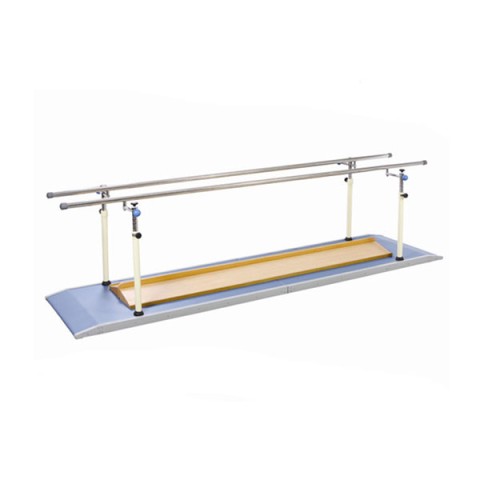Children with cerebral palsy often have problems with abnormal standing, and others may laugh at their walking abnormalities, which hurts them and casts long-lasting shadow. The correct static standing posture is to stand with both legs straight, place people’s head centered, extend the trunk, and put shoulders and hips in a horizontal position respectively. Dynamic standing posture means that the head, trunk and limbs can move appropriately while standing and still maintain balance. As a result, children with cerebral palsy cannot walk normally unless they achieve static and dynamic balance. But clinically, children with cerebral palsy may have many limb movement disorders, including scissor gait, talipes varus and valgus, etc., which brings many troubles to their lives.

Changzhou Kondak Medical Rehabilitation Equipment Co., Ltd., a specialist in research and development, manufacturing and distribution of rehabilitation medicine equipment, suggests making use of children rehabilitation equipment to perform sit-to-stand training for children with cerebral palsy, and offers three ways that can be used to help them complete gait training.
1. Standing position training (active)
For a child with cerebral palsy who fails to support weight by trunk and lower limbs but has poor pelvic girdle stability, the child should hold a fixed object with both hands, and the therapist applies some pressure downward with both hands on the child’s pelvis, so that the child can slowly learn to control the pelvis and knee joints.
2. Single-leg stand training
When the child can basically maintain the active standing position, people can gradually start to train the child to stand on one foot and perform children gait training dynamic balance in the standing position.
Horizontal movement: The therapist places both hands on either side of the child’s pelvis, and when the body weight is shifted to one side, the therapist uses the hand on that side to apply a downward pressure through the pelvis to the lower extremity. The other hand induces relaxation of the lower extremity by lifting the child’s pelvis upward, shifting the body weight to the opposite side.Vertical movement: When standing with one foot in front of the other, the therapist gives the child a forward push and places the other hand on the opposite shoulder of the child to ensure that the child’s body moves forward with it. When the child’s body weight shifts backwards, the therapist’s hands change from pushing to pulling backwards.
3. Training methods for moving on one foot
When the child stands, the child should shift body weight to one side. By using children rehabilitation equipment, the therapist places one hand on the front of the knee and the other hand around the knee on the same side. The child bends the knee up and hooks the toe, and slowly straightens the foot. Repeat the exercise from front to back and then back to front until the child is able to master this movement.
After the child stands with his hands on the bed rail, the child should shift body weight to the other side, with the other foot on a small wooden cart, roller skates or a ball, stick or other rollable object. Then the child should swing foot forward and backward.The child holds the bed rail with one foot weighted and the other foot stepping up and down small wooden bench and other objects of certain height, which can be increased as the child’s ability improves.In case of any difficulties during the children gait training, the therapist can also use assistive devices to hold the child’s pelvis with both hands, which can not only protect the child from falling but also induce the child to learn how to shift the gravity center of body from left to right and from front to back by pushing and pulling the pelvis.
Media Contact
Company Name: CHANGZHOU KONDAK MEDICAL REHABILITATION EQUIPMENT CO.,LTD.
Email: Send Email
Phone: +86 15006120035
Address:120 houxiazhuang, lijia, wujin
City: Changzhou
State: Jiangsu
Country: China
Website: https://www.kd-physicalrehab.com/
